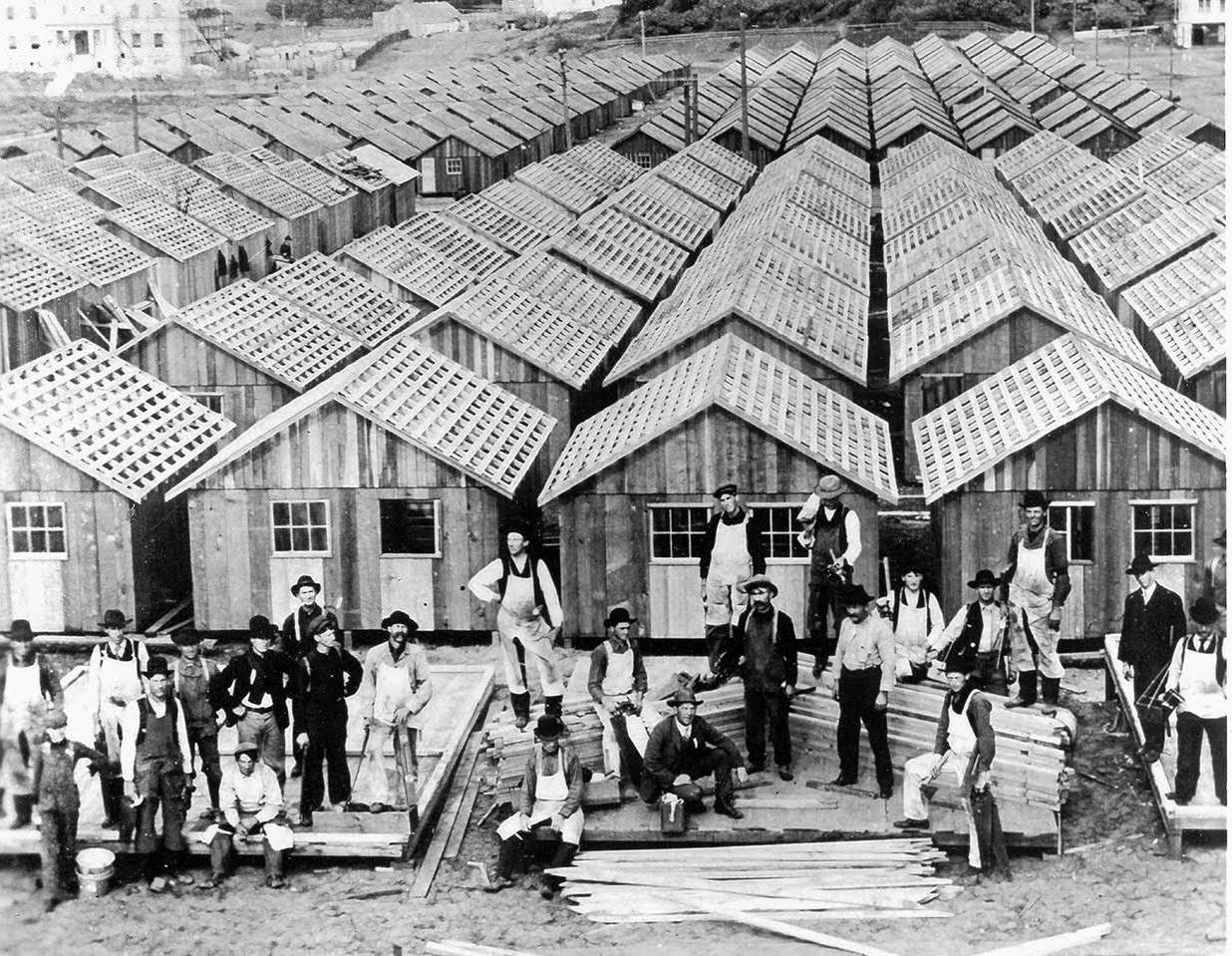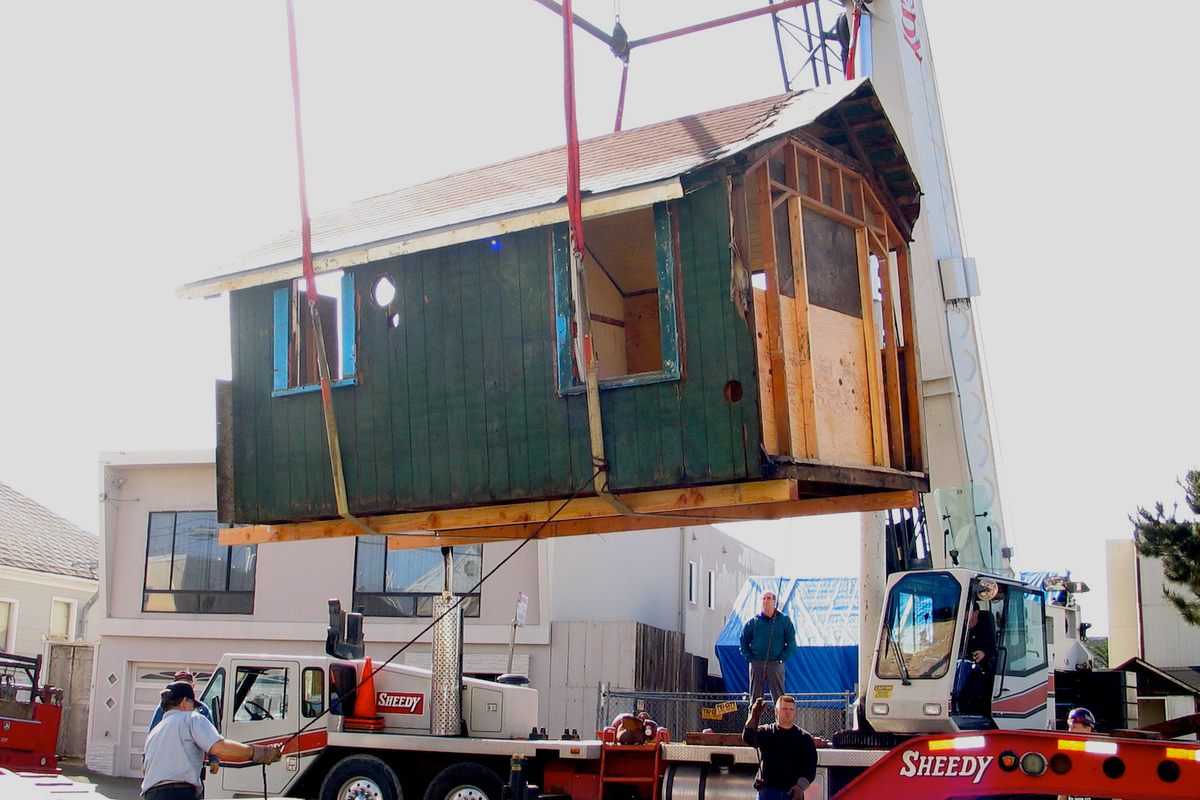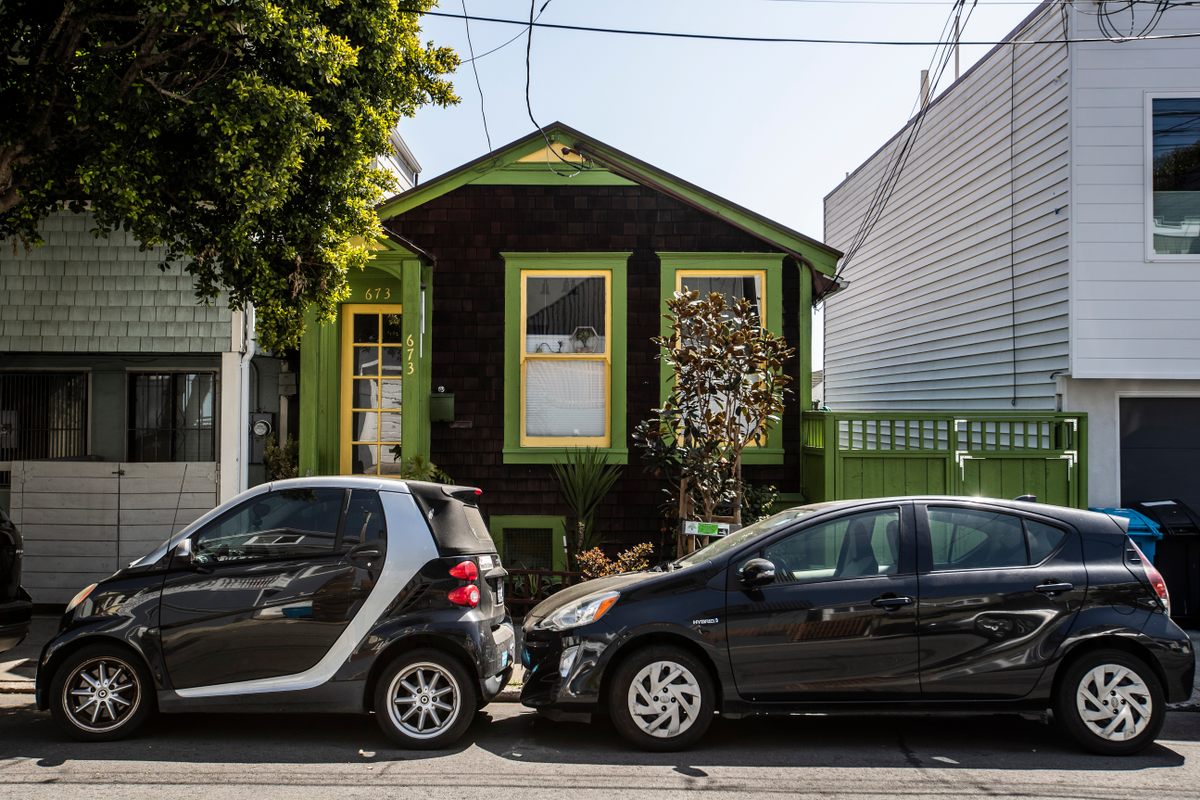The Earthshaking History of San Francisco’s Quake Shacks
https://www.atlasobscura.com/articles/san-francisco-earthquake-shacks
The Earthshaking History of San Francisco’s Quake Shacks
You can still spot these tiny reminders of the 1906 earthquake in the city today.

In 1982, San Francisco resident Jane Cryan was looking for a home for herself and her grand piano when she stumbled upon a tiny cottage along 24th Avenue, in the city’s Outer Sunset neighborhood. “There was a refrigerator in the front yard,” says Cryan, “and a feral cat living there with umpteen kittens.” The paint on the cottage’s barn red with white trim exterior was peeling. “It was a disaster,” she says, “and everything I had ever wanted.” Cryan signed the lease that same day. It wasn’t until a month later that Cryan found out she was living in three cobbled-together refugee shacks, the same ones originally built to house displaced San Franciscans after the city’s devastating 1906 earthquake and fire.
When the 7.9 magnitude earthquake hit San Francisco in the early morning hours of April 18 that year, it wreaked havoc on the city—destroying 500 city blocks and leaving 250,000 people homeless. Tent camps were a temporary solution, but the city needed to figure out something more substantial before winter arrived. So the San Francisco Relief Corporation, the San Francisco Parks Commission, and the US Army joined forces to build “earthquake shacks,” 5,610 single-story structures spread among 20-plus refugee camps across the city. More than a century later, a couple dozen of these historic cottages still remain.
“The earthquake shacks were among the first concerted efforts at disaster relief that had happened in our country,” says David Gallagher, co-founder of the Western Neighborhoods Project, a non-profit that shares the history and raises awareness of San Francisco’s westernmost neighborhoods.

Located in open spaces like Washington Square in North Beach and present-day Mission Dolores Park, each “tiny home” ranged in size from 10-by-14 feet to 14-by-18 feet and was painted army green to blend with its surroundings. Redwood walls, fir flooring, and a gas stove for warmth were all common features. However, communal camp kitchens and bathrooms were also par for the course among camp residents.
“The shacks weren’t quite livable in a modern sense,” says Gallagher, so residents took to making their own improvements. Some plastered their inside walls with burlap sacks or newspapers (Recently, Gallagher saw an earthquake cabin in the city’s Bernal Heights neighborhood still covered in newspaper traces from 1906) to help prevent drafts. Others layered their roofs with shingles for insulation.
As an incentive for their occupants to remain in the city (approximately 75,000 citizens simply up and left following the quake), the shacks were rent-to-own. Inhabitants paid $2 each month per shack toward a grand total of $50. This allowed many San Franciscans to become first-time homeowners, with one caveat: once they’d finished payments, it was the new owner’s responsibility to move their shack or “cottage” to a permanent location.
Some of these new homeowners grouped together on a property to save costs, oftentimes even joining together multiple shacks—like the ones Cryan lived in—to create larger houses.

Cryan first brought these shacks back into San Francisco’s collective consciousness after more than 75 years. The aspiring jazz pianist become an advocate for their recognition and preservation, founding the now-disbanded “Society for the Preservation & Appreciation of San Francisco’s 1906 Earthquake Refugee Shacks” in 1983 and even restoring her own rental cottage, securing $500 from its owner to renovate the exterior, and receiving assistance from volunteers interested in preserving the home’s legacy.
“Unfortunately, we did such a good job of renovating the property,” says Cryan, “that the owner put it up for sale later that same year.” She was forced to move, but not before having the structure declared a San Francisco landmark. “I’ve always considered my old cottage, San Francisco Landmark #171, to be the people’s landmark,” says Cryan, “because it was the working people of San Francisco who first lived in them and in the camps.”
In 2002, Gallagher and his Western Neighborhoods Project co-founder Woody LaBounty found themselves trying to preserve another four former earthquake shakes—pieced together two-at-a-time on two neighboring lots—these ones in the city’s fog-shrouded Outer Sunset. “I heard about them and thought, this is something that we can do that is tangible and might put us on the map as a history organization,” says Gallagher.

LaBounty himself had significant ties to the refugee camps. His great-grandparents met while both living at one. Still, he didn’t know much about the history of the shacks until their non-profit started figuring out how to preserve them.
It wasn’t easy. “For us, trying to save the buildings was a roller coaster of emotions,” says LaBounty. “One day you receive an encouraging lead, and the next it’s been shot down because there’s a wall that is going to fall or someone has broken in.” Eventually, LaBounty, Gallagher, and their team secured new sites for three of the shacks (“The fourth one had just lost too much of its original material,” says LaBounty). One lives on at the San Francisco Zoo—but not before it spent a month downtown as part of the city’s April 2006 earthquake centennial exhibit—and the other two are across the bay at Oakland’s Fifth Avenue Institute, an artist non-profit close to the city’s historic Jack London Square.
Despite being intended as short-term starter homes at best, at least a couple dozen of San Francisco’s earthquake shacks still exist. There’s a white-clad shack on Clement Street in the city’s Outer Richmond neighborhood, set back behind a large grassy yard and a picket fence; and Cryan’s former cottage—now painted in key-lime green with white trim. There are even a couple of them behind the Old Post Hospital on Mesa Street in San Francisco’s Presidio. (Although there’s talk of relocating them.) Known as the “Goldie Shacks,” they most resemble the cottages as they looked in 1906, complete with the drab green paint job. One is even furnished to show how it might have looked inside.

The bulk of the remaining shacks are located in Bernal Heights, a small community of steep hills and narrow streets in the city’s southeast. “Bernal Heights had a lot of small lots that could fit an earthquake cottage and not much else,” says LeBounty, “as well as a relatively blue-collar population that wasn’t going to tear it down and build a big new house…at least that’s how it was through a lot of the 20th century.” Stand on the top of Bernal Hill and you’ll have a view of one (really, a couple of them patched together with an addition or two) along Carver Street, a reminder of the city’s persevering past juxtaposed against its present-day skyline.
While they’re not always so easy to identify—some owners have added on extra rooms, built interior walls, or even incorporated earthquake shacks into larger structures—traces of that unmistakable green paint still often remain for those who are looking. According to LaBounty, one or two new ones seemingly “pop up” every year. Although the city doesn’t offer any official protection for the remaining shacks, there are members of San Francisco’s city planning department and local neighborhood groups that are still fighting to save these historic remnants of rebirth.
“They’re such a physical way to connect with this historic event that completely transformed our city,” says LaBounty. “I mean, they’ve all been moved once, right? So it’s kind of OK to move them again.”




Post a Comment